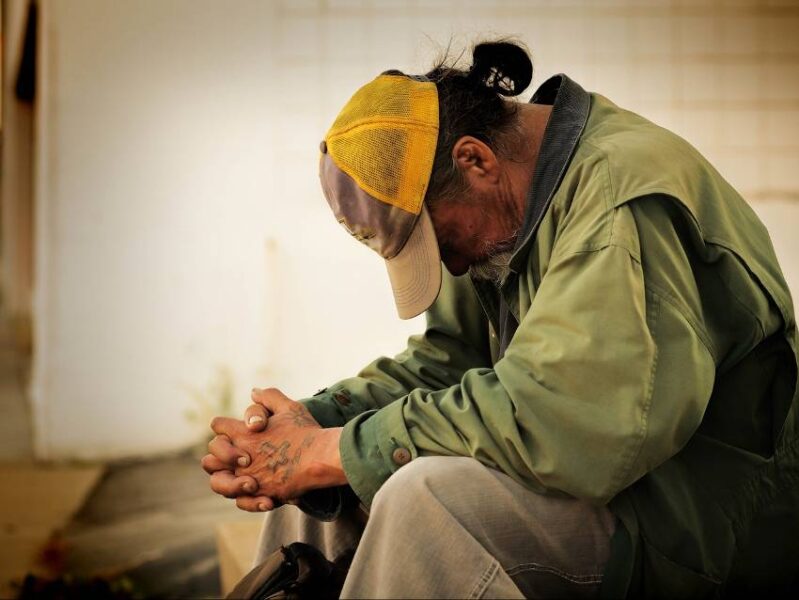In the US, approximately 37.9 million people, or 11.4% of the population, lived below the poverty line in 2022.
It has been well demonstrated that poverty negatively affects physical and mental health. For example, people living in poverty run a greater risk of mental illness, heart disease, hypertension, and stroke, and have a higher mortality and lower life expectancy. The mechanisms by which poverty impacts on health outcomes are manifold: for example, people experiencing poverty have reduced access to healthy food, clean water, safe housing, education, and healthcare.
Now, researchers have shown for the first time that the effects of poverty may combine in a synergistic manner with another risk factor, chronic inflammation, to reduce health and life expectancy even further. They found that health outcomes for Americans living in poverty and with chronic inflammation are significantly worse than expected from their separate health effects. The results are published in Frontiers in Medicine.
“Here we show that clinicians need to consider the effect of inflammation on people’s health and longevity, especially on those experiencing poverty,” said lead author Dr Arch Mainous, a professor at the University of Florida.
Inflammation is a natural physiological reaction to infections or injuries, essential for healing. But chronic inflammation – caused by exposure to environmental toxins, certain diets, autoimmune disorders such as arthritis, or other chronic diseases like Alzheimer’s – is a known risk factor for disease and mortality, just like poverty.
NHANES
Mainous and colleagues analyzed data from adults aged 40 and older, enrolled between 1999 and 2002 in the National Health and Nutrition Examination Survey (NHANES), and followed them until 31 December 2019. The NHANES, conducted since 1971 by the National Center for Health Statistics, tracks the health and nutritional status of US adults and children. The NHANES allows for estimates of the US population represented by the cohort, and this study represented nearly 95 million adults. The authors combined NHANES data with records from the National Death Index, to calculate mortality rates over a period of 15 years after enrollment.
Among other demographics, NHANES records the household income. The authors divided this by the official poverty threshold to calculate the ‘poverty index ratio’, a standard measure of poverty.
Chronic inflammation
Whether participants suffered from severe inflammation was deduced from their plasma concentration of high sensitivity C-reactive protein (hs-CRP), produced by the liver in response to the secretion of interleukins by immune and fat cells. The concentration of hs-CRP, included among NHANES data, is a readily available, informative, and well-studied measure of inflammation: for example, elevated concentrations are known to increase the risk of cardiovascular disease and all-cause mortality.
Typically, a concentration of greater than 0.3 mg/dl hs-CRP is taken to indicate chronic systemic inflammation, but Mainous et al. also considered the more stringent threshold of 1.0 mg/dl in a separate analysis.
The authors classified participants in four groups: with or without chronic inflammation, and living below the poverty line or not. By comparing the 15-year mortality rate between these, they could thus study the effects of poverty and inflammation separately and jointly.
Synergistic effect
“We found that participants with either inflammation or poverty alone each had about a 50% increased risk in all-cause mortality. In contrast, individuals with both inflammation and poverty had a 127% increased heart disease mortality risk and a 196% increased cancer mortality risk,” said Dr Frank A. Orlando, an associate professor at the University of Florida and the study’s second author.
“If the effects of inflammation and poverty on mortality were additive, you’d expect a 100% increase in mortality for people where both apply. But since the observed 127% and 196% increases are much greater than 100%, we conclude that the combined effect of inflammation and poverty on mortality is synergistic.”
Routine screening for both risk factors?
A wide variety of treatments for systemic inflammation exists, ranging from diet and exercise to nonsteroidal anti-inflammatory drugs (NSAIDs) and steroids. The present results suggest that clinicians might consider screening socially disadvantaged people – already a medically vulnerable group – for chronic inflammation, and if necessary treat them with such anti-inflammatory drugs. However, steroids and NSAIDS aren’t without risks when taken long-term. More research will thus be needed before patients are routinely prescribed them in clinical practice to decrease systemic inflammation.
“It’s important for guidelines panels to take up this issue to help clinicians integrate inflammation screening into their standard of care, particularly for patients who may have factors that place them at risk for chronic inflammation, including living in poverty. It is time to move beyond documenting the health problems that inflammation can cause, to trying to fix these problems,” concluded Mainous.


